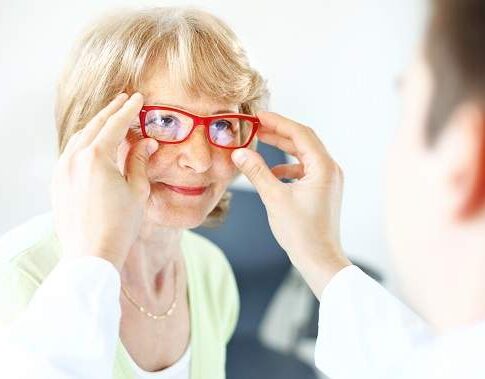January is National Eye Care and National Glaucoma Awareness Month.
Vision changes can occur as you get older. Based on statistical data from the American Optometric Association, approximately 142 million U.S. citizens age 40 and older have vision problems.
It is important to know the most common age-related eye and vision problems, the signs and potential treatment options in order to retain good vision as you age.
GLAUCOMA is a group of eye diseases characterized by damage to the optic nerve resulting in loss of peripheral (side) vision. It often affects both eyes, typically one eye before the other. If left untreated, glaucoma can lead to total blindness. People with a family history of glaucoma, African Americans and older adults have a higher risk of developing the disease.
Glaucoma occurs when there is unusually high pressure on the optic nerve. The pressure can break down the nerve leading to blind spots. It is often painless and can have no obvious symptoms until there is a significant loss of side vision.
If you have been diagnosed with Glaucoma, treatment options may include prescription eye drops, oral medications, laser treatment, surgery or a combination of any of these.
CATARACTS are cloudy or opaque areas in the normally clear lens of the eye. Depending upon their size and location, they can interfere with normal vision. Usually, cataracts develop in both eyes, but one may be worse than the other.
Cataracts occur at the clear lens in front of the eyeball and can cause blurry vision, decreased contrast sensitivity, inability to see in low-light conditions (such as when driving at night), dulling of colors and increased sensitivity to glare.
If you have been diagnosed with Cataracts, the most common treatment is surgery to remove the clouded lens. In many cases, the affected lens is replaced with a clear, plastic intraocular lens.
AGE-RELATED MACULAR DEGENERATION (AMD) is an eye disease that affects the macula (the center of the light-sensitive retina at the back of the eye), resulting in central vision loss. The macula is the part of the retina that allows us to see fine detail and colors. Activities like reading, driving, watching TV and recognizing faces all require good central vision provided by the macula. While macular degeneration decreases central vision, peripheral or side vision typically remains unaffected.
AMD affects the middle of your vision causing a blurry, dark patch directly in your line of sight, and overall foggy appearance to what is seen, and what appears to be waves in straight objects.
If you have been diagnosed with age-related Macular Degeneration, the most common treatment is nutritional therapy with a healthy diet high in antioxidants to support the cells of macular. If more severe, anti-angiogenic drugs and laser therapy are other treatment options.
DIABETIC EYE DISEASE (OR DIABETIC RETINOPATHY) is a condition that occurs in people with diabetes and the result of progressive damage to the tiny blood vessels that nourish the retina. These damaged blood vessels leak blood and other fluids that cause retinal tissue to swell and cloud vision. The condition usually affects both eyes. The longer a person has diabetes, the greater the risk of developing diabetic retinopathy.
Instability of one’s glucose measurements over time can impact the development and/or severity of the condition. Signs include spots or dark strings floating in your vision, blurred vision, impaired color vision, or dark or empty areas in your vision. At its most severe, diabetic retinopathy can cause blindness.
If you have been diagnosed with diabetic eye disease, the most common treatment is to get blood glucose, blood pressure, and blood cholesterol levels as close to normal as possible. Laser treatment or intravitreal steroids are additional treatment options.
GET ROUTINE CHECK-UPS. It is normal for your vision to change as you age, but losing your vision is not a normal part of aging. Everyone, regardless of age, needs to safeguard their sight and get regular eye exams. If you are experiencing any changes with your vision, contact your local eye care professional as soon as possible.
At FirstLight, our caregivers are available to take you to and from your medical appointments, and if any medical treatment is required that limits your ability to live independently, we can be there with customized services to help you recover.
Call your local FirstLight® Home Care today to learn more about how we can help you live independently as you age in the place you call home.
